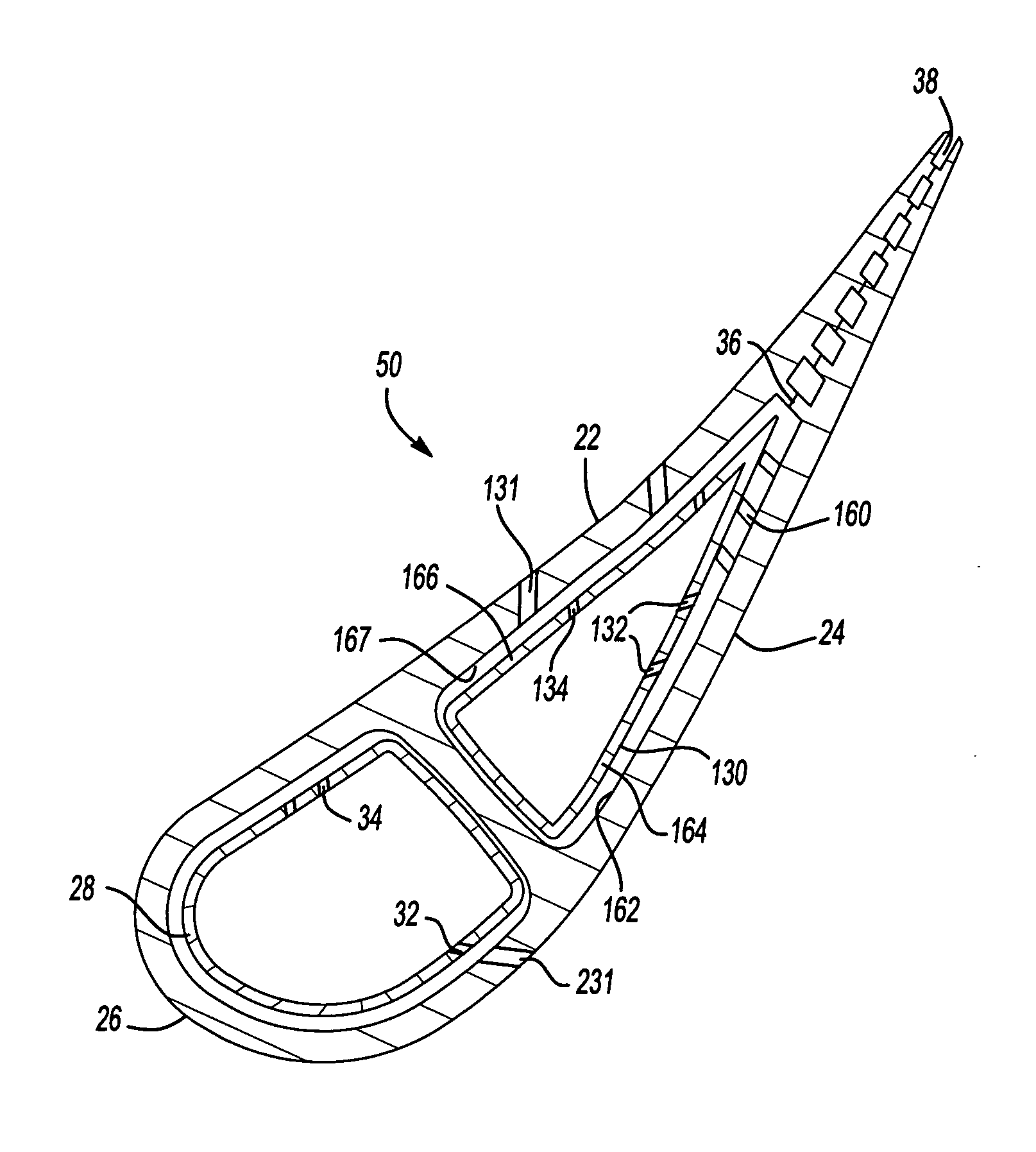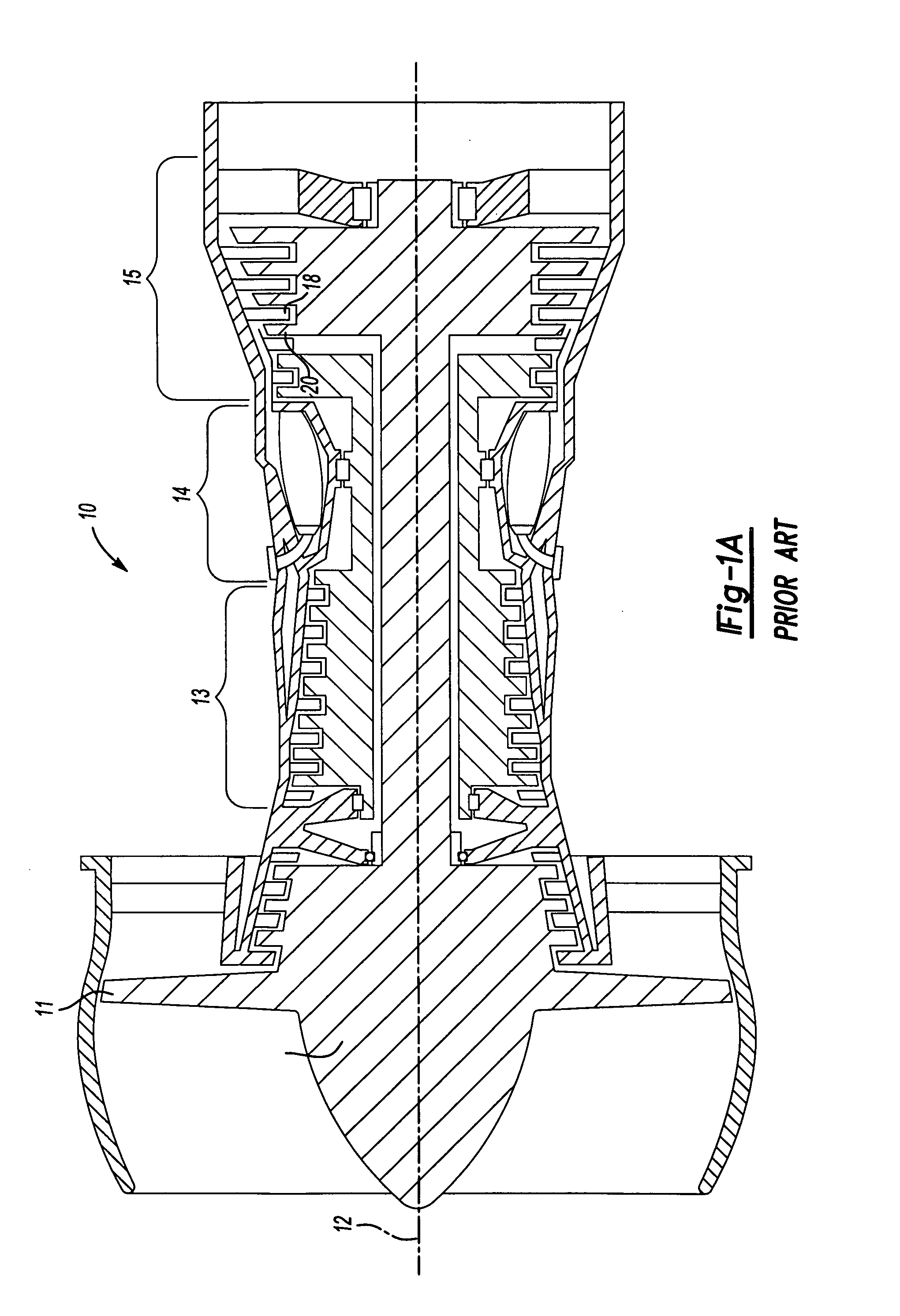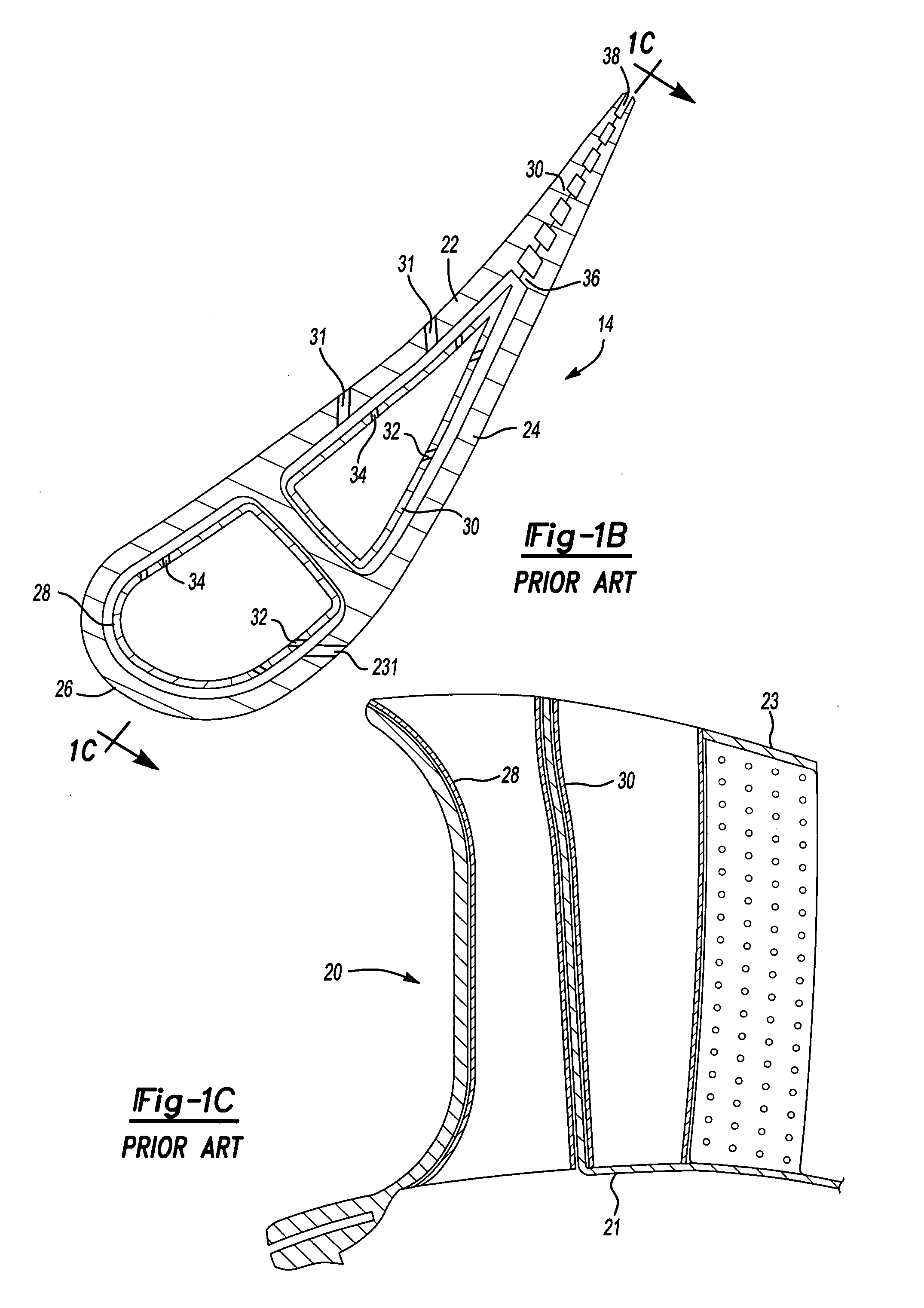Gas turbine engine component suction side trailing edge cooling scheme
a gas turbine engine and cooling scheme technology, applied in the direction of machines/engines, liquid fuel engines, mechanical equipment, etc., can solve the problems of degrading cooling air provided by film cooling air along the trailing edge, and affecting the cooling effect of gas turbine engines. , to achieve the effect of increasing the convective surface area, increasing the height, and increasing the cooling
- Summary
- Abstract
- Description
- Claims
- Application Information
AI Technical Summary
Benefits of technology
Problems solved by technology
Method used
Image
Examples
Embodiment Construction
[0022]FIG. 1A shows a gas turbine engine 10. As known, a fan section 11 moves air and rotates about an axial center line 12. A compressor section 13, a combustion section 14, and a turbine section 15 are also centered on the axial center line 12. FIG. 1A is a highly schematic view, however, it does show the main components of the gas turbine engine. Further, while a particular type of gas turbine engine is illustrated in this figure, it should be understood that the present invention extends to other types of gas turbine engines.
[0023] The turbine section 15 includes a rotor having turbine blades 20, and stationary vanes 18. As mentioned above, these turbine blades 20 and vanes 18 become quite hot as the products of combustion pass over them to create power. The present invention is directed to cooling schemes for better cooling such components.
[0024] A gas turbine engine component is illustrated in FIG. 1B, as a stationary vane. However, it should be understood that the present i...
PUM
 Login to View More
Login to View More Abstract
Description
Claims
Application Information
 Login to View More
Login to View More - R&D
- Intellectual Property
- Life Sciences
- Materials
- Tech Scout
- Unparalleled Data Quality
- Higher Quality Content
- 60% Fewer Hallucinations
Browse by: Latest US Patents, China's latest patents, Technical Efficacy Thesaurus, Application Domain, Technology Topic, Popular Technical Reports.
© 2025 PatSnap. All rights reserved.Legal|Privacy policy|Modern Slavery Act Transparency Statement|Sitemap|About US| Contact US: help@patsnap.com



